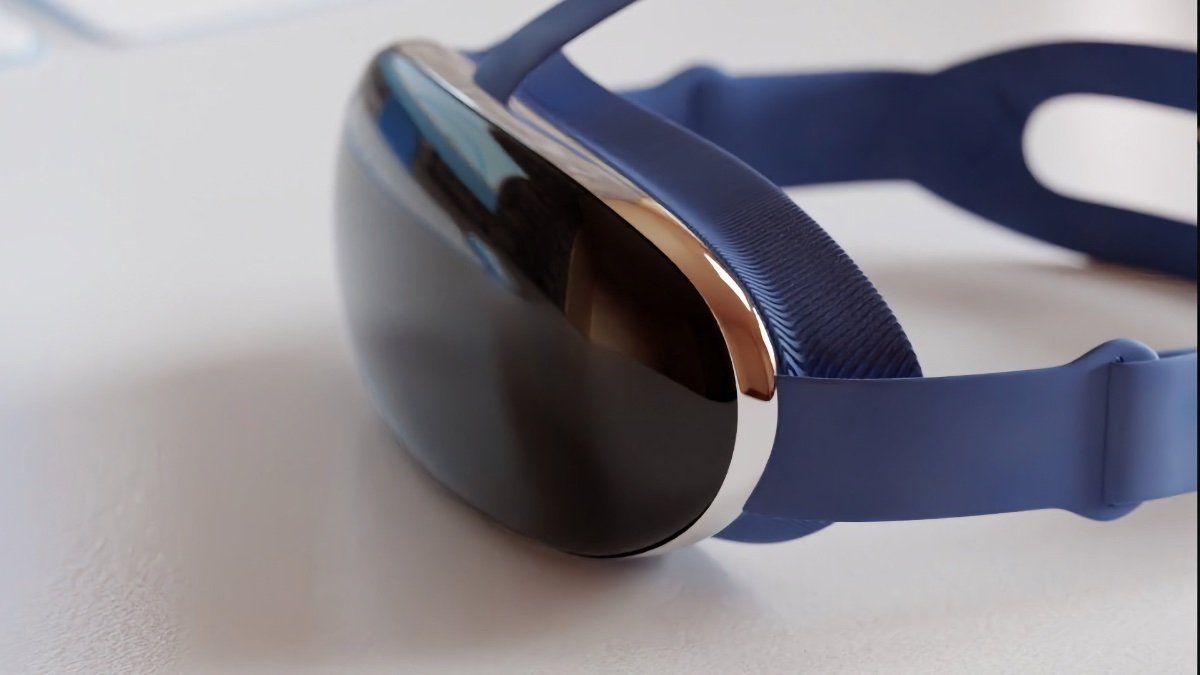Render of Apple headset

Despite the divergence of the upcoming Apple AR headset from the company's original vision, and skepticism from executives, Tim Cook himself is actively pushing the project forward.
Anticipated to make its debut at WWDC in June, the Apple VR and AR headset is poised to capture significant attention. While much speculation has revolved around its hardware capabilities, it appears that its array of features and functions could be equally extensive.
A new report from Bloomberg on Thursday shares details gleaned from conversations with pepole involved in the headset's development. According to the sources, Apple embarked on the project with a firm belief in the significance of mixed reality but had concerns about potential social isolation caused by such devices.
Initially, the company focused on developing lightweight augmented-reality glasses, but due to technological limitations, the objective gradually shifted towards a product resembling existing devices. This shift was also influenced by the desire to bring a product to market and internal disagreements about the project.
Apple aims for a future where customers can wear the device throughout the day, effectively replacing various daily activities typically carried out on an iPhone or a Mac. These tasks include gaming, web browsing, emailing, engaging in FaceTime video calls, collaborating within applications, exercising, and even practicing meditation.
The company acknowledges that the headset may not have an immediate transformative impact like the iPhone. However, internal projections suggest that with the addition of features and subsequent versions that offer reduced prices, the headset has the potential to reach a level of success similar to that of the iPad or the Apple Watch.
That could contribute over $25 billion annually to the company's revenue. Apple is aware that achieving this level of success will require time.
Initially, the company had hoped to sell around 3 million units per year, but those estimates have been revised to approximately 900,000 units. In comparison, Apple sells over 200 million iPhones annually.
Although the company once considered selling the headset at a loss to get it into the hands of as many people as possible, it may end up selling it at cost.
Tim Cook's vision
Since the beginning, Cook had wanted headset to be the "Apple Glasses," a lightweight, unobtrusive device for augmented reality. However, the company has had to change the design and make it more bulky due to technical limitations.
"Nobody in here — few people in here — think it's acceptable to be tethered to a computer walking in here and sitting down," he told a group of students at a 2016 technology conference in Utah. "Few people are going to view that it's acceptable to be enclosed in something, because we're all social people at heart."
According to individuals who have collaborated with him, Cook, despite having firm opinions, was not extensively involved in the detailed design of the headset. This approach contrasts notably with Apple co-founder Steve Jobs, who was known for his distinctive design sensibilities onto Apple products.
"The closest Cook gets to product development is a demo," says one of the people. "But even then, he's not the type of guy who says it should do X and not Y. He's the complete opposite of Steve in terms of having strong opinions on the minutiae."
But sources said that other prominent figures in Apple's upper management, including Craig Federighi, the senior vice president for software engineering, have also maintained a certain level of detachment and expressed caution regarding the headset. For example, Johny Srouji, Apple's senior vice president for hardware technologies, has privately expressed skepticism, compared the project to a science experiment.